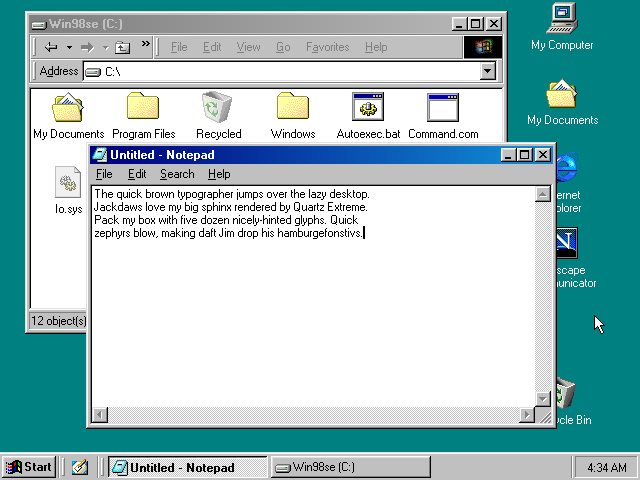

- HOW TO GET MICROSOFT SANS SERIF FONT ON WINDOWS 10 INSTALL
- HOW TO GET MICROSOFT SANS SERIF FONT ON WINDOWS 10 DRIVER
- HOW TO GET MICROSOFT SANS SERIF FONT ON WINDOWS 10 FULL
I realised that the issue is not an internal problem, but can occur on any Windows 7 system that has a high resolution monitor for which drivers can be found during the initial install and so default with 125% DPI. Because the initial setting was 100% DPI, the MS Sans Serif font was the correct size.
HOW TO GET MICROSOFT SANS SERIF FONT ON WINDOWS 10 DRIVER
Once I installed the video driver from Windows Update, I was able to get to the native resolution and remain at 100% DPI. As my machine is older, when I installed the Windows 7 Ultimate build, it did not have the video driver and so defaulted to a lower resolution at 100% DPI. In my case, the internal Windows 7 Enterprise build had an appropriate video driver for my machine and was able to go to the native resolution (1920 x 1200) and default to 125% DPI. This problem does not occur if Windows 7 keeps DPI at 100% when it is first installed. But the bitmap MS Sans Serif font does not: it remains at the larger size, hence our issue. If the user then decides to set the DPI back to 100%, then TrueType fonts, which are scalable, adjust as expected. When the system defaults to 125% DPI it also adjusts the MS Sans Serif font to be bigger. This is approximately 125% of normal 96 DPI (100%). The really significant issue is, unlike CRT monitors, flat-panel LCD monitors have a fixed pixel size, or "resolution", and that when users change to a lower resolution (in order to increase text size) the system has to re-sample the lower-resolution display image into its fixed resolution causing a significant degradation in display quality: not just text looks worse, everything looks worse.Ī change was made for Windows 7, to set the screen resolution to the monitor's native resolution and if the screen is over a certain resolution to default the font size 120 DPI (dots per inch). This is a much better method of increasing the font size as it can produce much smoother images by using many more, smaller pixels. Windows includes a facility to increase font and window sizes while keeping the screen at the native resolution. This was usually because at the native resolution, the fonts were becoming too small to read, so the users would decrease the resolution. "Research showed that many users with high resolution monitors (particularly LCD flat screens) were running the monitors at lower resolutions than the native resolution of the screen.
HOW TO GET MICROSOFT SANS SERIF FONT ON WINDOWS 10 FULL
We recommend that you always ensure you have a full and valid (restorable) backup of everything you wish to be able to restore, before making any changes to your systems.*** RADical Systems provides no warrantees or guarantees, of any kind, as to functionality, fitness for use or indeed any other assurances of any kind. ***NOTE: Please note that David Musgrave's article is reproduced here for purely for the convenience of our uses and should anyone decide to implement any of the recommendations suggested, they do so entirely at their own risk. If the user right clicks on their desktop and selects 'Screen Resolution' and then 'Make Text and other items bigger or smaller', the 'default' is 'Medium - 125% ' rather than the usual 'Smaller - 100%'īelow is a summary of what is happening and the details of the fix required, provided by David Musgrave of Microsoft Dynamics GP

Trying to run SM on a Windows 7 PC, many of the buttons and text do not fit in the Windows, which require to be manually resized every time.


 0 kommentar(er)
0 kommentar(er)
